Athena in Art: The Beautiful Warrior Goddess
Athena, the revered Greek goddess of wisdom, war and the arts, has captivated the imagination of artists for centuries. Her image, from ancient...
Jimena Aullet 15 August 2024
And so the saga continues in our adventures of learning about Ancient Greek pottery! You will probably have noticed that I chose to skip a few letters of the alphabet in this article and the previous one on the same topic. It is not because there is a lack of terminology for these letters, but rather because I wanted to focus on those terms with correlating images of pieces of Ancient Greek pottery.
Lekythos – The lekythos is an oil bottle. It is one of the most common shapes; the lekythos was used for either scented oils or household oils, such as those used in cooking.
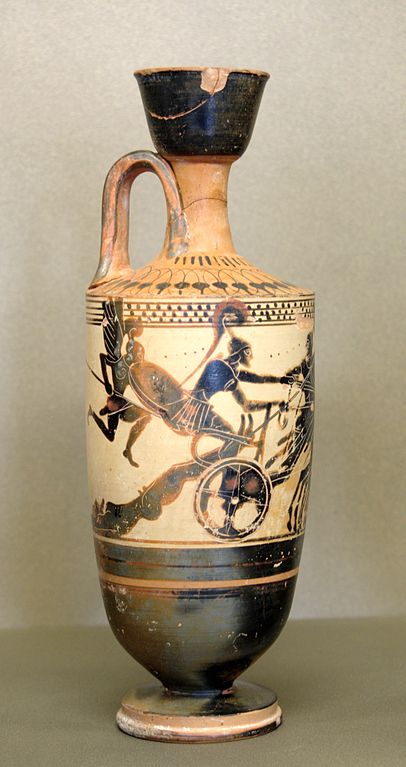
Loutrophoros (pl. Loutrophoroi) – This particular piece of pottery was used to hold water for the ceremonial bathing of either a bride or groom; as a grave marker and also in burial rites. The literal translation of the term loutrophoros is ‘bath carrier.’ Andrew Clark states, however, that it is not definite whether the term loutrophoros refers to the pottery itself or the person carrying it. While several themes and motifs decorate this particular vase, the two which stand out are weddings or funerals commemorations.
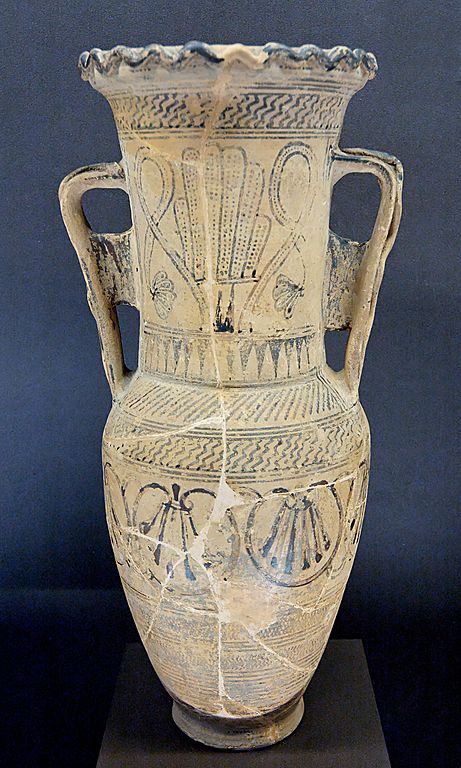
Mastos – A mastos was a wine-shaped cup shaped like a woman’s breast. Rather than having a stem or foot, the mastos comes to a point at its bottom in a similar shape to a nipple.
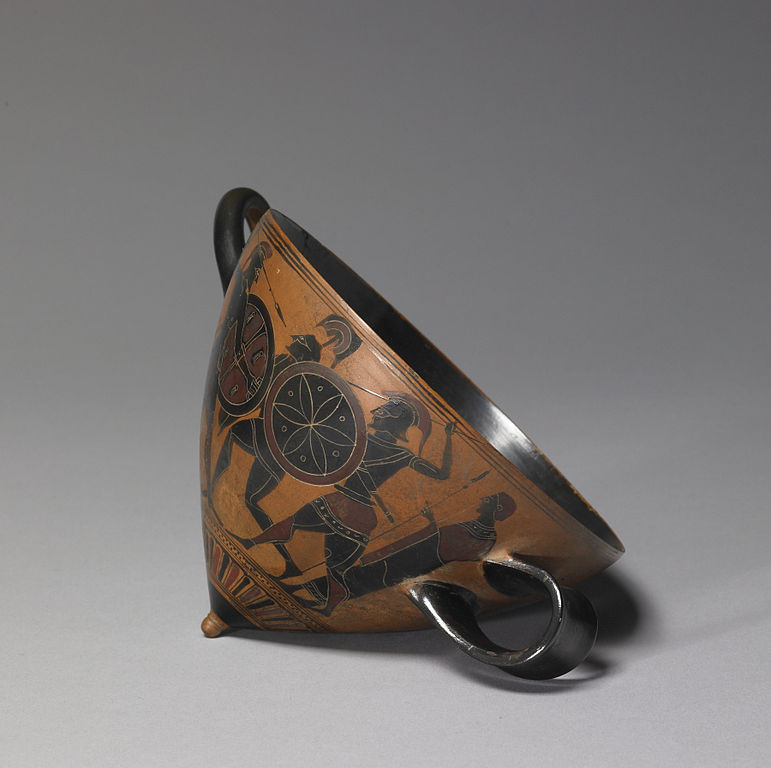
Meander – A meander is a design pattern that stems from the Geometric era of Ancient Greece. Also known as a ‘Greek key,’ the meander came in varying degrees of intricacy. The term comes from the Meander River in Turkey.
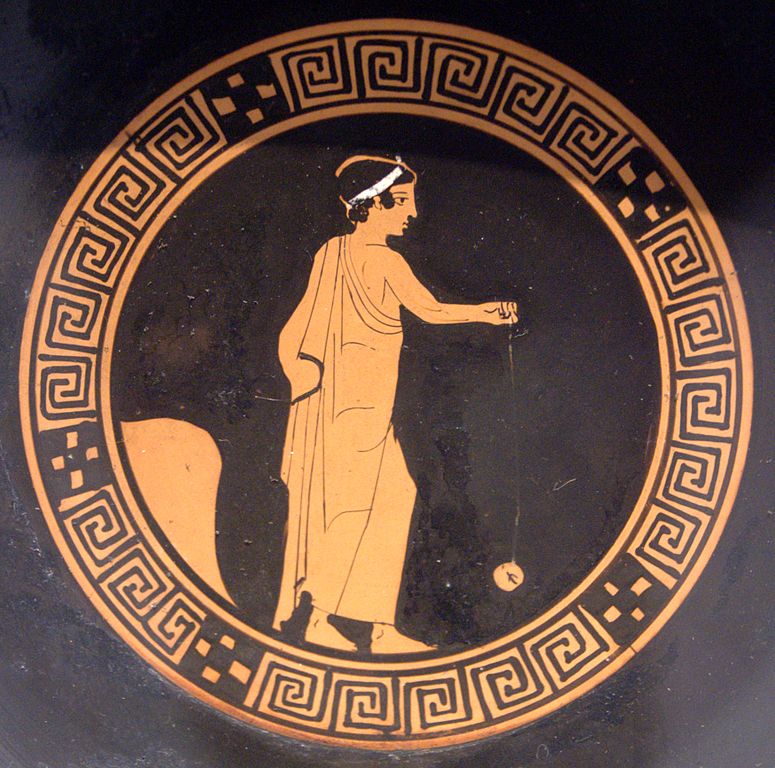
Oinochoe – Oinochoe is probably one of the hardest terms to pronounce…for me anyway! It is a pitcher used to serve wine. Like many other pottery examples, the designs on the side of the oinochoe reflected scenes of drinking or the mythological Dionysos and the myriad of other figures. The oinochoe came in varying shapes and was used in many festivals in Ancient Greece.
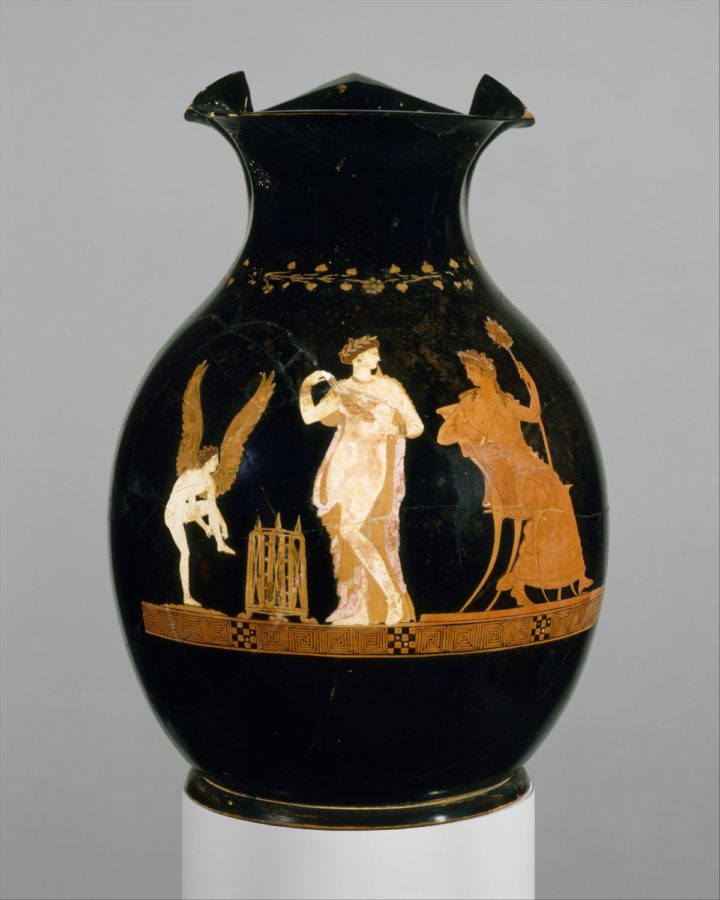
Oon (pl. oa) – The oon is a small, egg-shaped vase. It was an uncommon shape and therefore is considered a rare style of pottery. The oon came in varying forms with either no lid at all, a lid, or a small hole at both ends.
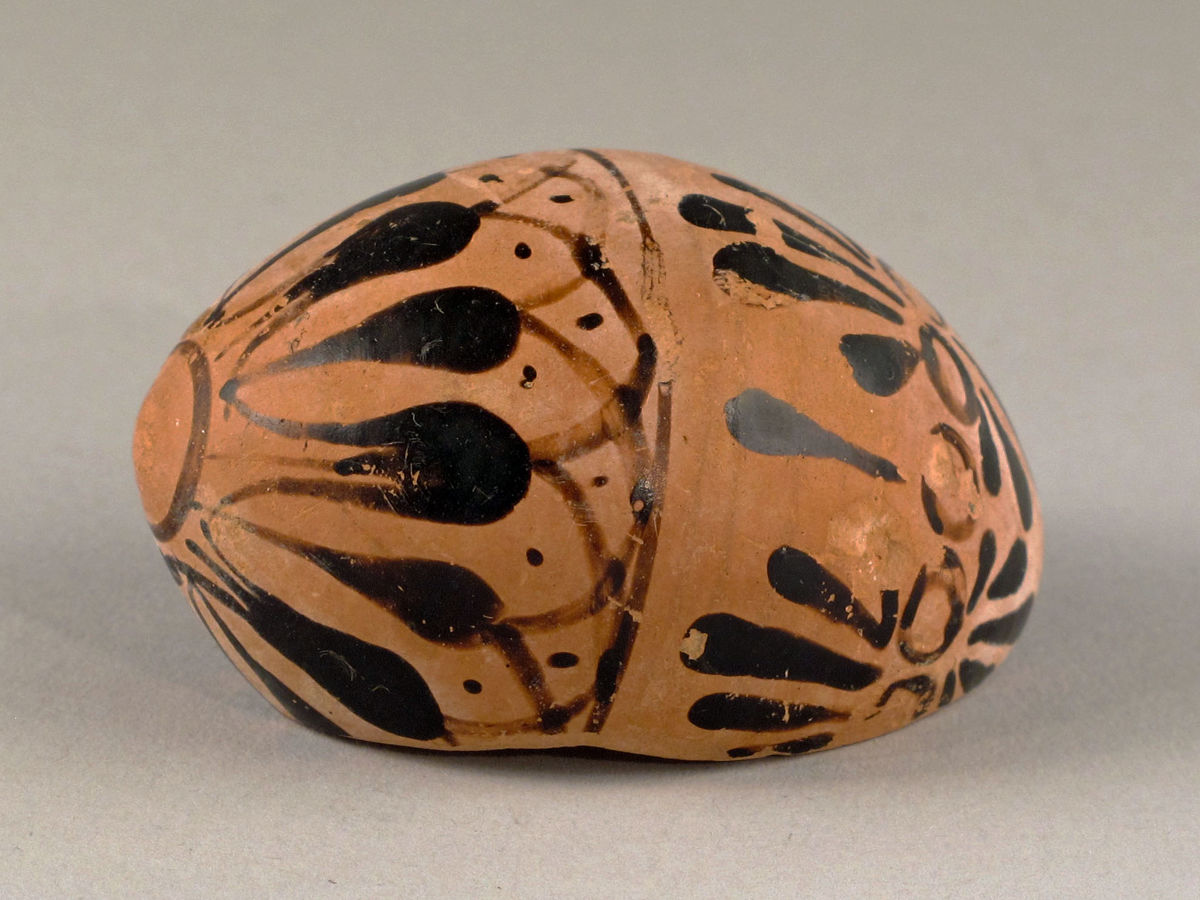
Orientalizing – The Orientalizing period in Ancient Greek art refers to roughly the 7th century BC (it is a sub-style, following Geometric and before Archaic). It is referred to as such because of the heavy influence of civilizations in the Near East and Egypt. Andrew Clark et al state that during this time, the Greeks adopted the Phoenician alphabet for their own decorative uses. The introduction of new symbols, animals, and Near East motifs broadened Ancient Greek artistic vocabulary.
Ornament – Ornament refers to any of the linear patterns or floral designs that decorate vases or scenes on the sides of the vase. Examples include palmettes, meander, rays, rosettes, a net, or ivy, among others. The piece depicted below showcases several ornaments on its surface.
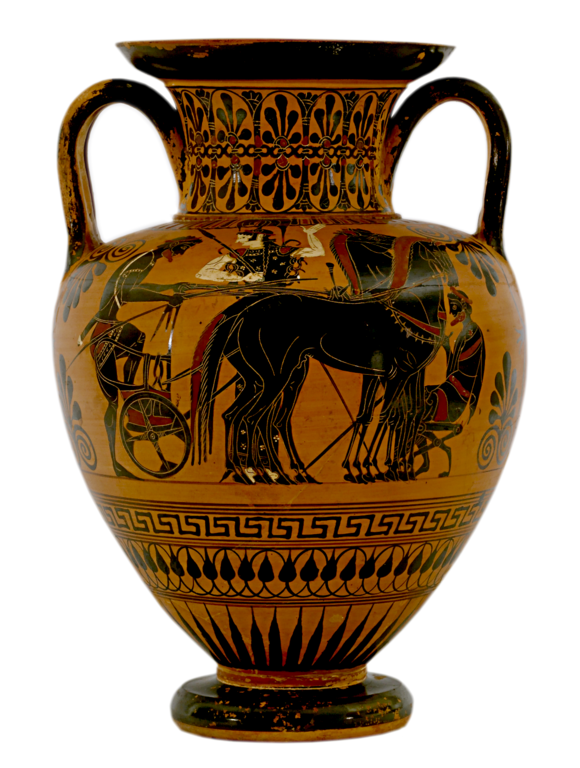
Psykter – This piece of Ancient Greek pottery was a mushroom-shaped vase used for the cooling of wine. There were no handles or a lid. There are several hybrids of this type of vase; likewise, it is possible that the name psykter was a general term for wine-cooling vessels.
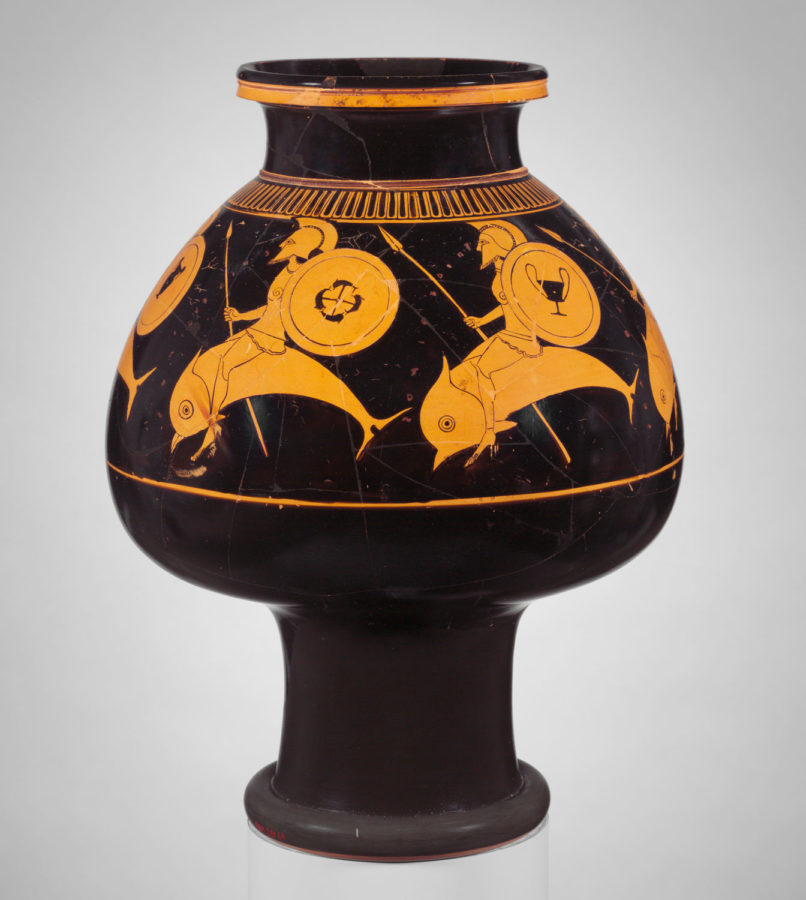
Pyxis – A pyxis is a small cylindrical box. It had many uses ranging from containers for incense, jewelry, or ancient cosmetics. Feminine scenes were generally painted on the sides of the vase.
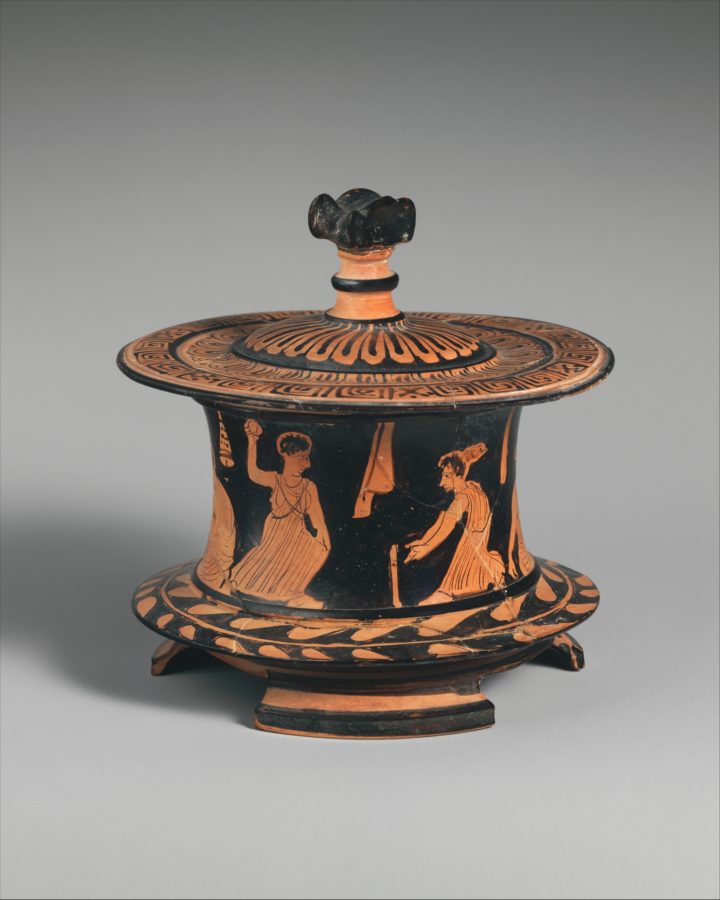
Red-Figure technique – Although the black-figure technique continued alongside the new and advanced red-figure technique, the newer technique was being produced with significantly more artistry on Ancient Greek pottery.

Rhyton – Used as a vase for drinking, the rhyton is a uniquely shaped vase. With one handle, this vase came in different shapes and sizes. There are examples of rhyton shaped as a bird, boar, cow, deer, bull, goat, pig, ram, and even a sphinx. The one below appears to be a fox.
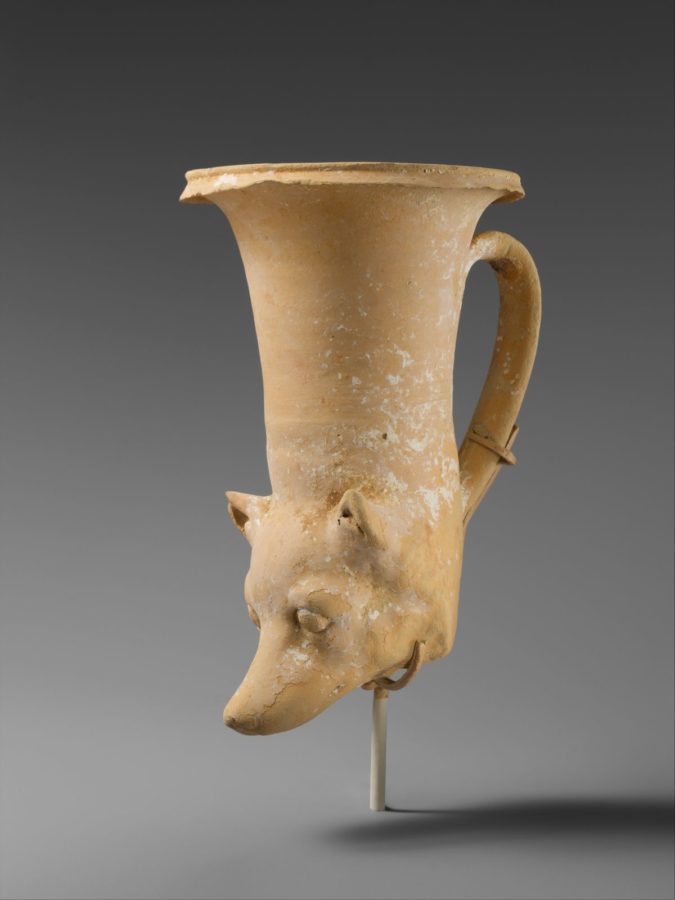
Skyphos – a drinking cup with a deep bowl. They were used at the symposium.
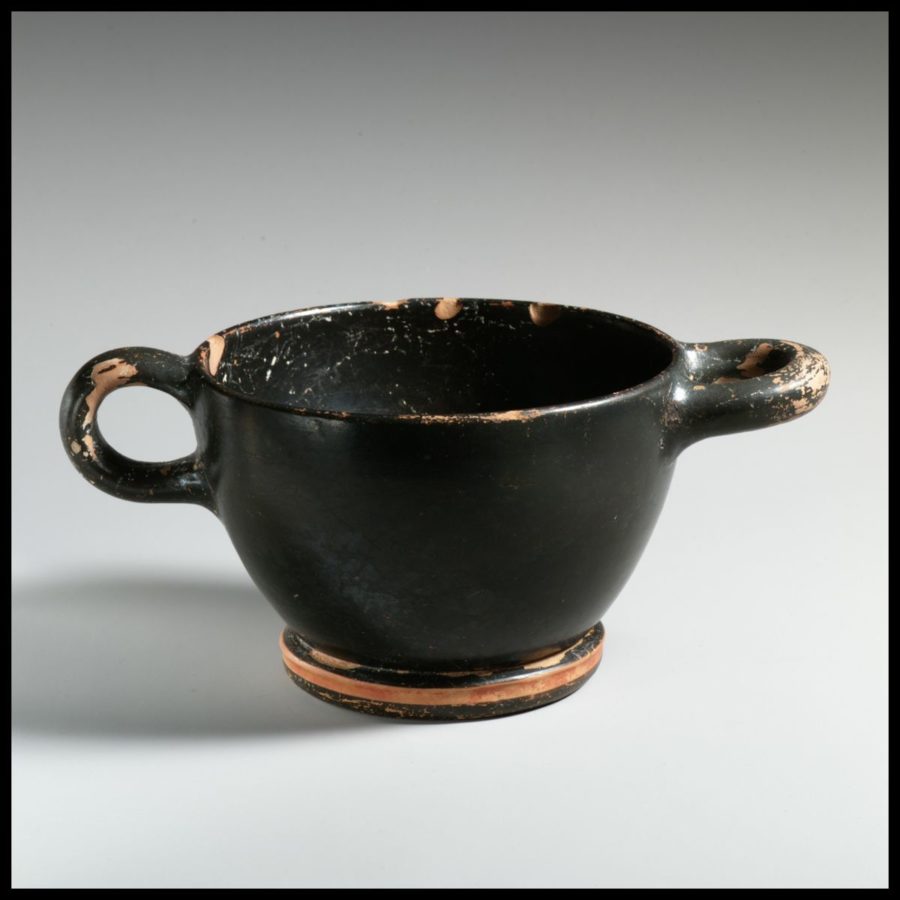
Stamnos – This broad-shouldered vase has a low foot and a low neck. Researchers do not know entirely whether these vessels were used solely for storage, as some examples were found with lids. The Classical Art Research Centre at the University of Oxford states that it also could have been used for the serving of liquids.
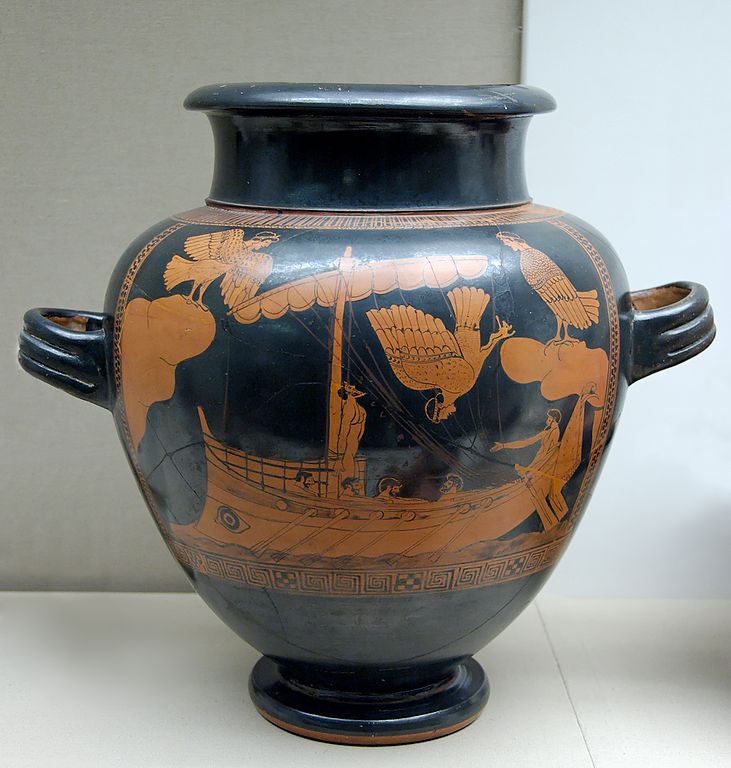
Tondo – The tondo is the circular decorated portion inside the cup, at the bottom.
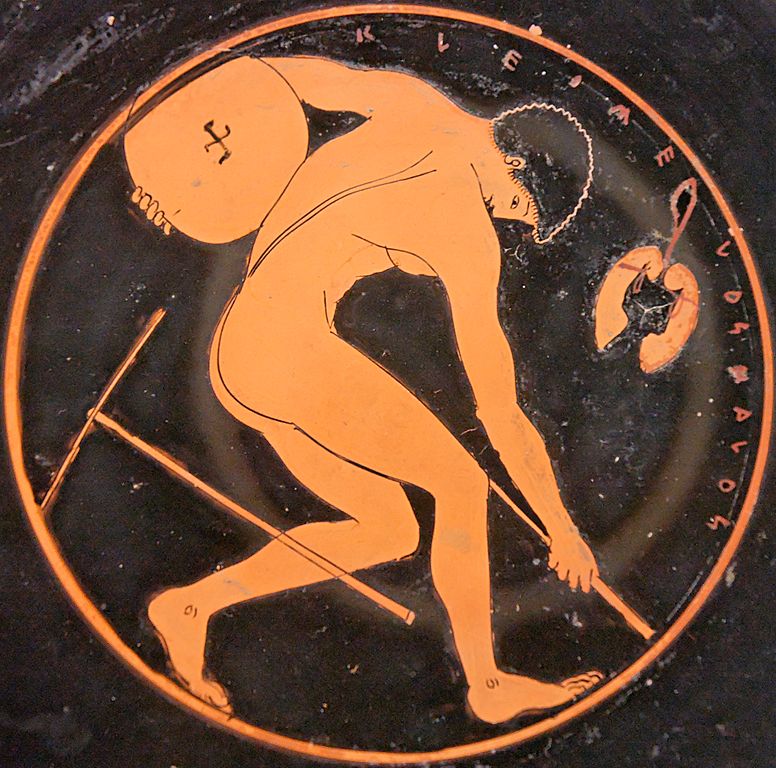
White-Ground – White-ground technique is an Ancient Greek style of pottery that shows the scenes, or figures, on a white background. More fragile than red-figure or black-figure, white-ground still maintained popularity throughout Attica.
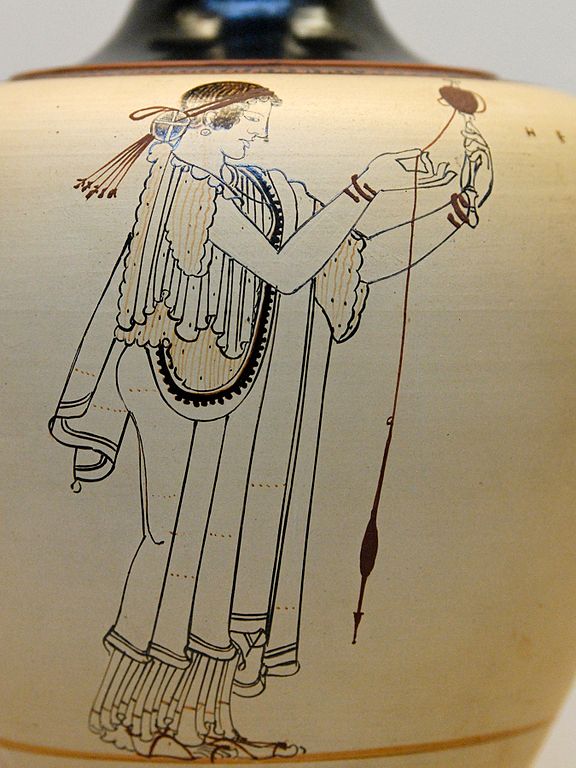
DailyArt Magazine needs your support. Every contribution, however big or small, is very valuable for our future. Thanks to it, we will be able to sustain and grow the Magazine. Thank you for your help!